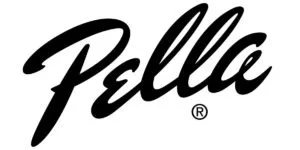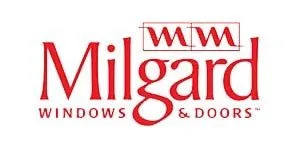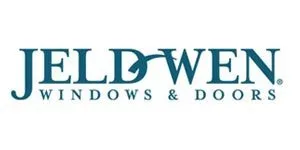
Low Emissivity Glass, also known as Low E Glass, has a coating applied to it to make windows more energy efficient. Low E glass is one of the cornerstones of any energy-efficient window. Its primary purpose is managing radiation, whether it is solar, light ultraviolet, or heat. The secret is two microscopic layers of silver, which reflect heat back to its source. Other layers in the Low E coating filter ultraviolet and solar radiation, while allowing visible light through.
The Basics of Low E Glass
Low-E coatings keep the interior of homes cooler in the summer, and warmer in the winter by allowing visible light to pass through the glass while reflecting heat back to its source.
What Are the Different Types of Low-E Coatings?
Low-emissivity (Low-E) coatings are essential for enhancing the energy efficiency of windows. They help reduce heat transfer, keeping interiors comfortable. There are two main types of Low-E coatings, each with distinct characteristics:
- Passive Low-E Coatings (Hard-Coat)
- Production Method: These are created through a method known as the pyrolytic process. During this process, the coating is applied to glass while it’s still hot from production, which results in a coating that becomes part of the glass itself.
- Durability: The fusion of the coating to the glass surface makes it highly resilient and robust, hence the term “hard-coat.”
- Usage: Its durability makes it ideal for regions where heating is more desirable than cooling, such as in colder climates.
- Solar Control Low-E Coatings (Soft-Coat)
- Production Method: These are developed using the Magnetron Sputtering Vapor Deposition (MSVD) process. Unlike hard-coat, this technique applies the coating to pre-measured glass in a sealed chamber at room temperature.
- Performance: Known for its superior control over solar heat gain, this type features lower emissivity. It provides excellent performance in blocking solar radiation, making it suitable for warmer climates needing better heat insulation.
- Installation: Due to its more delicate nature compared to hard-coat, it’s often encapsulated in insulated glass (IG) or laminated units to ensure effectiveness and longevity.
Choosing between passive and solar control Low-E coatings depends on specific climate needs and insulation goals.
Differences Between Passive Low-E Coatings (Hard-Coat) and Solar Control Low-E Coatings (Soft-Coat)
When deciding between passive and solar control Low-E coatings, understanding their manufacturing processes and performance capabilities is crucial.
Passive Low-E Coatings (Hard-Coat)
- Manufacturing Process: Created using a pyrolytic method, these coatings are directly applied to the glass during production. This process involves fusing the coating to the hot glass as it’s formed, resulting in what’s known as a “hard-coat.”
- Durability: The fusion process creates a strong bond with the glass, leading to a highly durable coating. This makes hard-coat Low-E glasses resilient and suitable for applications without insulated glass units.
Solar Control Low-E Coatings (Soft-Coat)
- Manufacturing Process: Produced using Magnetron Sputtering Vapor Deposition (MSVD), the “soft-coat” is applied to pre-cut glass inside a vacuum chamber at room temperature. Unlike hard-coats, this process occurs separately from the glass production.
- Performance and Application: Soft-coat Low-E glass has a lower emissivity and excels in solar control, offering superior energy performance. However, it typically requires encapsulation within insulated glass units to maintain its efficacy and protect the delicate coating.
In summary, the main differences lie in the production technique and the resulting performance characteristics. Hard-coats are tough and versatile, whereas soft-coats deliver excellent thermal properties but need additional protection for optimal use.
The Science of Low Emissivity Glass
Low Emissivity (Low E) glass manages radiation, including solar, light, ultraviolet, or heat via two microscopic layers of silver. The silver reflects heat back to its source.
How does Low E Glass work in different environments?
Understanding which type of Low-E glass is best for your climate can significantly impact your home’s energy efficiency and comfort. Here’s how different types of Low-E glass function across varying climates:
- Predominantly Heating Environments: IntelliGlass reflects furnace heat back into the home, reducing the burden on the furnace while keeping your home warm and comfortable. Some solar radiation passes through the glass, providing a source of free energy. Most UV radiation is blocked, ensuring a high amount of visible light shines through. For extremely cold climates, a hard-coat Low-E glass might be advantageous as it allows some short-wave infrared energy to enter, aiding in heating during those chilly months.
- Predominantly Cooling Environments: IntelliGlass reflects exterior heat away from your home. Solar radiation is filtered to maintain the comfortable indoor temperature provided by the air conditioner. Most UV radiation is blocked, allowing a high amount of visible light to shine through. In climates that range from cold to hot, a soft-coat Low-E glass is often recommended due to its superior UV protection and better overall U-value. This type of coating reflects both warm and cool air back into your room, enhancing energy efficiency throughout the year.
By selecting the appropriate Low-E glass based on your climate, you can optimize your home’s energy efficiency, reducing costs and improving comfort regardless of the season.
Low-E glass, known for its energy efficiency, relies on several key factors to gauge its performance. Here’s how they interrelate:
Solar Heat Gain Coefficient (SHGC)
This metric gauges how much solar radiation penetrates through the glass. It accounts for solar energy that is directly transmitted as well as that which is absorbed and re-emitted. A lower SHGC indicates less heat from the sun entering your space, which is desirable in warmer climates to reduce cooling costs.
U-Value
The U-Value measures the rate of heat loss through the glass. It tells us how well the window insulates. A lower U-Value means better insulation, keeping indoor temperatures stable by minimizing the escape of heat during cold weather. This is crucial for energy conservation and maintaining comfort.
Visible Light Transmittance (VLT)
VLT measures the amount of visible light that the glass allows inside. High VLT means more natural light enters a room, which is excellent for reducing the need for artificial lighting and creating a bright, welcoming environment. However, the right balance is needed to prevent glare and excessive heat.
Light to Solar Gain Ratio
This ratio compares the visible light transmittance to the solar gain coefficient. It’s an indicator of the efficiency of utilizing natural light while minimizing heat gain. A higher ratio suggests that the glass allows in more light with less associated heat, which enhances energy efficiency without sacrificing brightness.
In summary, these factors collectively determine the effectiveness of Low-E glass in optimizing energy savings and comfort. They help balance the need for natural light with energy efficiency and indoor climate control, making them crucial in selecting the right glass for your building needs.
What about Gas Filling? Is it really in there?
Argon gas is an odorless, non-toxic gas that’s injected between panes of sealed glass to increase a window’s insulation and sound-proofing capabilities. Argon gas increases the R-value (measurement of thermal resistance) by minimizing the heat exchange through the window while reducing the possibility of condensation and frost build-up in cold or humid climates. Argon is an inert gas that is denser than air, making it more difficult for heat or cold to transmit through glass. Vinylmax uses sophisticated filling equipment and a Thermal Check verification system to ensure maximum performance.
What if our home is in a climate that is both heating and cooling?
Each IntelliGlass package features climate-specific Low E glass that is designed to maximize energy efficiency for your Energy Star Climate Zone. Choosing a triple-pane option provides the ultimate in window performance and meets Energy Star Most Efficient performance criteria.
To further enhance energy efficiency, the triple-pane glass is filled with two layers of argon gas, which significantly improves insulation by reducing heat transfer. Additionally, the glass incorporates advanced soft-coat Low E layers, specifically engineered to reflect heat back into the room during the winter and reject solar heat in the summer.
Our windows are crafted with innovative spacer technology between the insulated glass panes. This technology creates a thermal barrier that minimizes the transfer of heat, ensuring optimal indoor temperatures year-round. Importantly, these features are designed to optimize energy savings without compromising the brightness of your living space, allowing natural light to flood your home without visible darkening.
When selecting window styles, sizes, and designs with an eye on energy efficiency, homeowners must weigh several factors. Understanding the type of glass used in windows is critical. Energy-efficient windows often feature Low-E (low emissivity) coatings. These coatings are designed to enhance a window’s performance by reducing heat transfer. This not only increases comfort but also lowers energy bills by minimizing reliance on heating and cooling systems.
Moreover, Low-E glass helps protect your home’s interior. It significantly reduces UV rays, which can cause fading in furniture and décor over time. So, when picking out windows, it’s not just about the style or the fit for your home’s design — it’s also about considering the long-term benefits that the right glass technology can provide.
In addition to glass, consider frame materials and construction quality. Vinyl, fiberglass, and wood all offer different advantages in terms of insulation and maintenance.
Key Points to Consider:
- Opt for Low-E glass to improve energy efficiency.
- Look for windows with quality insulation properties.
- Evaluate frame materials for their thermal performance and upkeep needs.
By taking these elements into account, you can choose windows that not only enhance your home’s aesthetic but also contribute to a more energy-efficient living environment.
Why Should I choose an Energy Star-qualified window?
You can improve your indoor comfort while saving money on heating and cooling costs. Replacing your home’s windows with Energy Star-qualified windows can filter out damaging ultraviolet light, and save you hundreds of dollars on heating and cooling costs. But how exactly do they achieve this?
These windows often feature advanced technologies, such as Low-E (low-emissivity) coatings. These coatings are vital in improving the energy efficiency of your windows. By reflecting heat back into the room during winter and blocking out the sun’s heat in the summer, Low-E coatings help maintain a stable indoor temperature.
This reduces the need for excessive heating or cooling, leading to significant savings on your energy bills. Additionally, these coatings protect your furniture and décor from fading by blocking harmful UV rays.
Incorporating such energy-efficient features into your home not only enhances comfort but also contributes to long-term cost savings.
Ready to Replace Your Windows?
New Windows for America offers all kinds of different window styles that would be perfect for your kitchen! We have 25+ years of experience with installing kitchen windows, or windows for your entire home! New Windows for America is currently offering 25% off factory-direct pricing on our windows & doors! We are happy to work with you on finding the best kitchen window replacement for your Colorado home and can offer you a free estimate.
Contact our New Windows for America Team today and get a free estimate.



